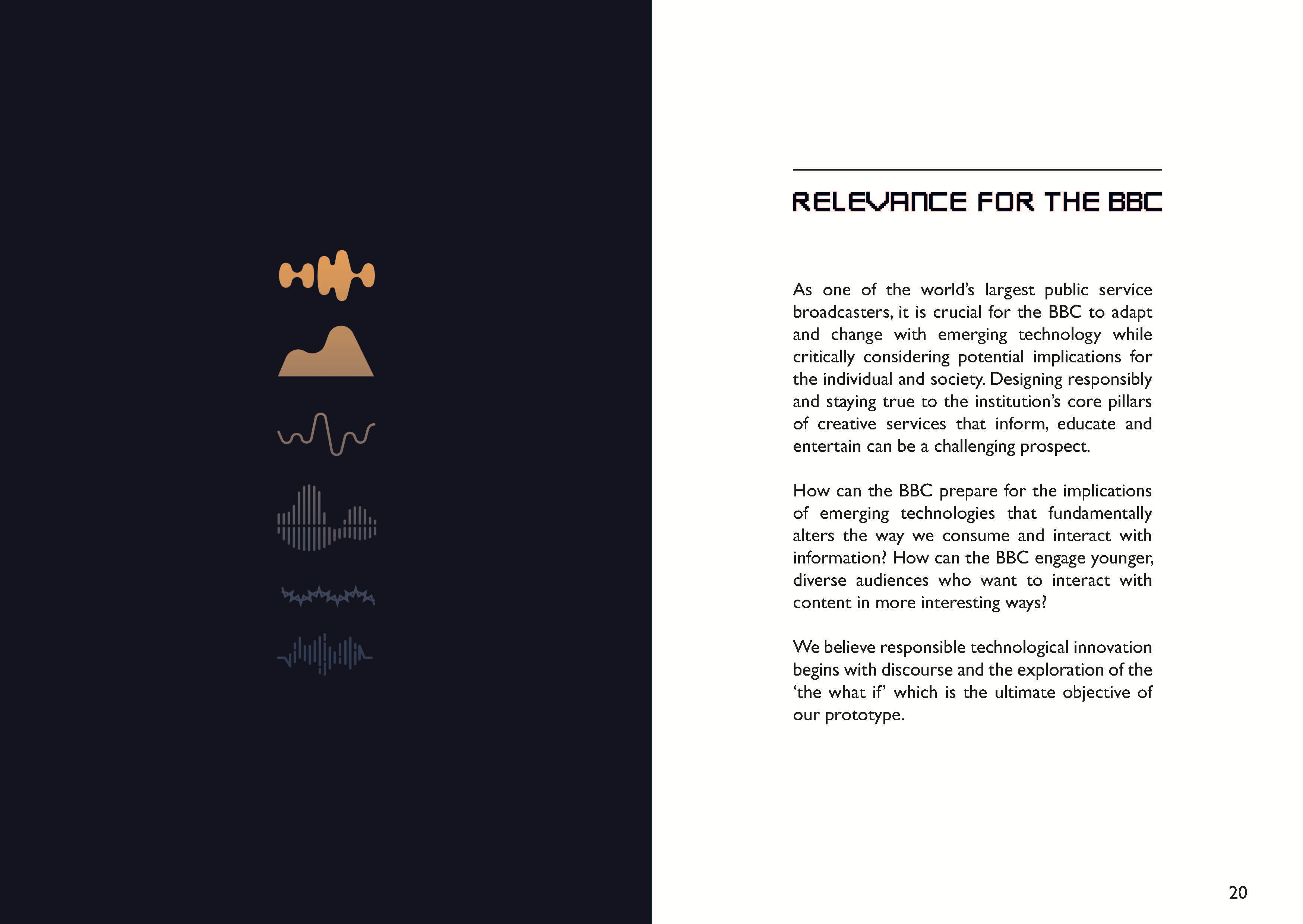Gamification & Storification
Teaching Archive from MA Information Experience Design, Royal College of Art
What would it mean to be an Information Experience Designer working in the gaming industry? How can experimental games and interactive storytelling change the way we perceive information? In this teaching unit students were asked to spend the term producing a prototype of a game that can make a piece of information play-able and interactive. The topic was up to each student. Each week students were introduced to a fundamental of game design, as well as techniques and examples used by IED staff and the wider gaming industry. Students were set a series of short briefs that allowed them to explore the gaming fundamentals as experimentally as they wanted, and ultimately to inform the design of their game.

Workshops
Research and Storyboarding for Narrative Design
During this workshop we explored the use of a variety of research methods that can be used to build a strong narrative to inform game design. Working together online (because of the pandemic) we began by undertaking rapid research and mood-boarding using the overall theme chosen as a focus for the game, for example I began by gathering materials from around my house related to the topics of mushrooms and the collapse of human structures to inform the initial idea generation for my game “Gunkanjima & Mushrooms”:
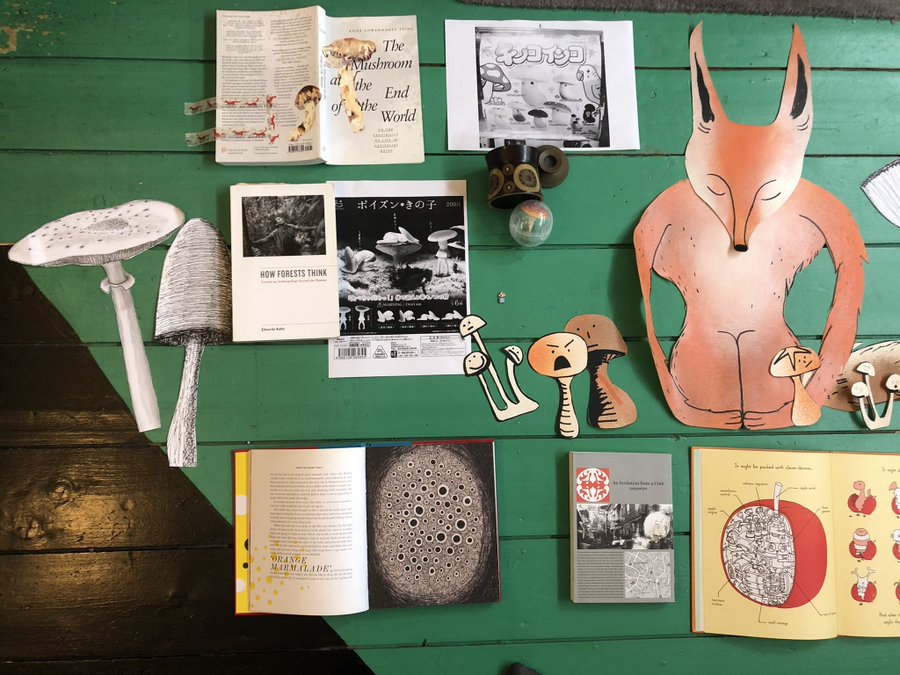
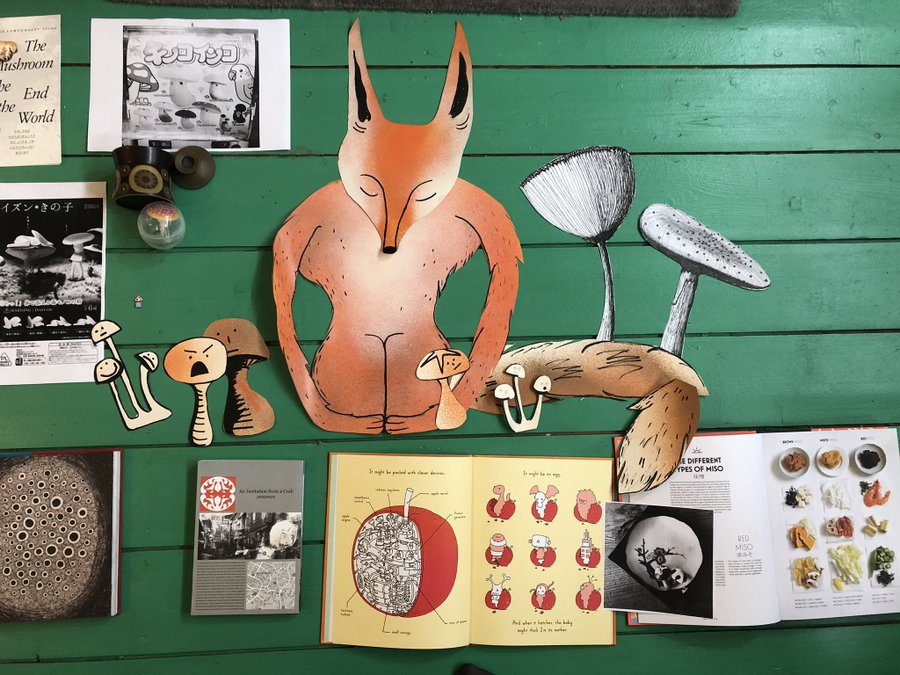
Guest lecturer Olivia Sullivan showed examples of where research came into the design of her work ‘Old North, Isle Rocks’:


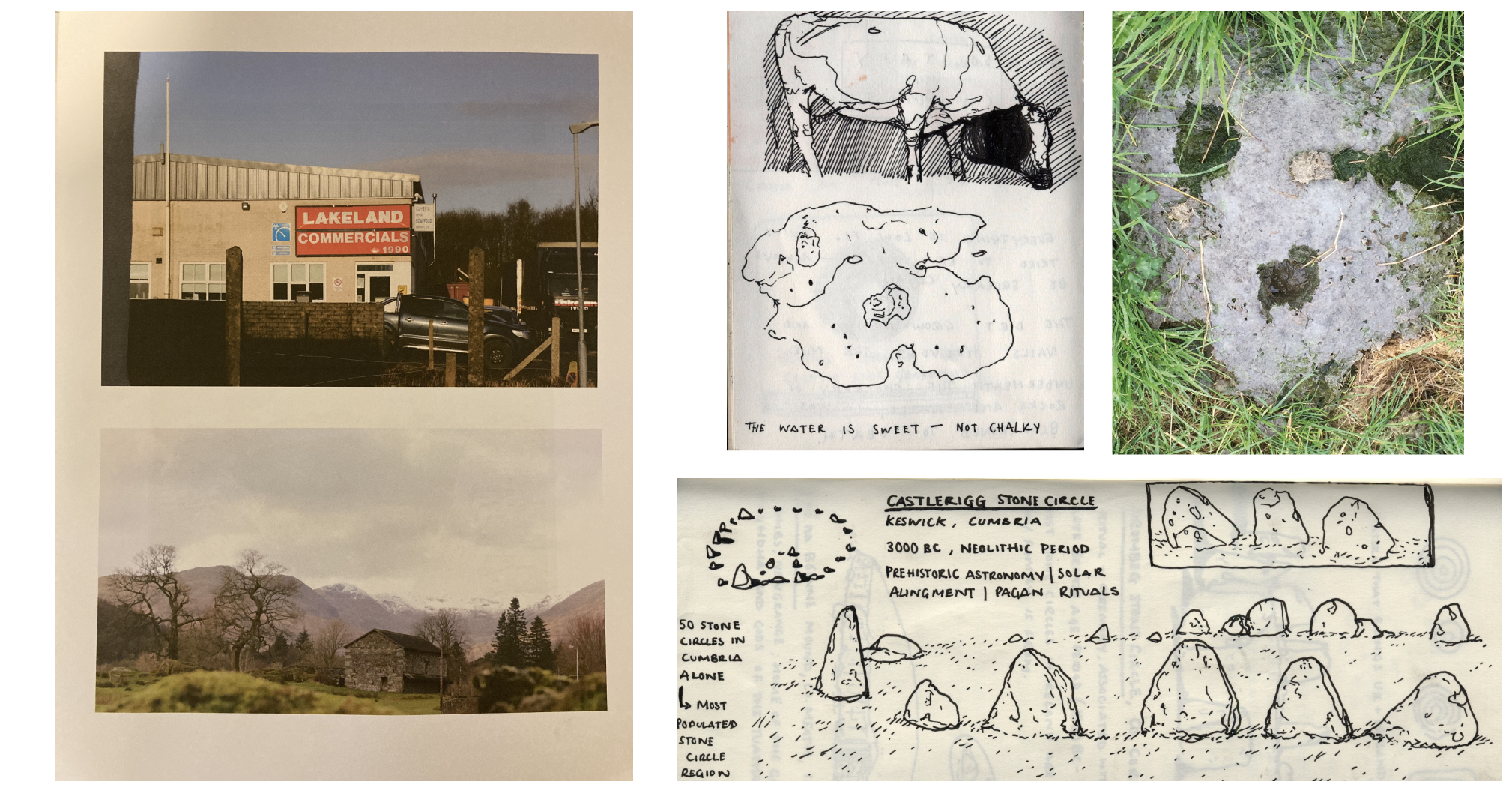

Students were introduced to various ways to begin researching their chosen topic in relation to multiple modes and senses, such as Sensory Ethnography and Multimodal theory. We also discussed the work of Federico Campagna and how we could choose to position our gaming narrative in relation to “reality” [technic] or the “unreal” [magic].
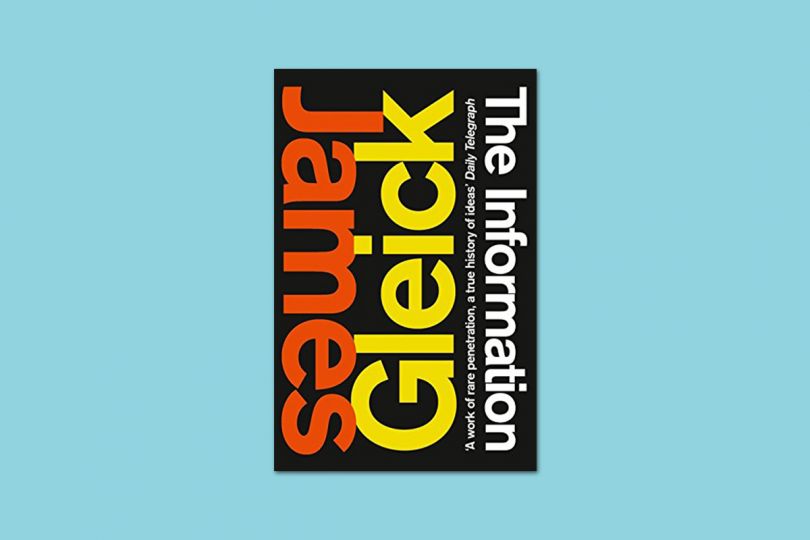
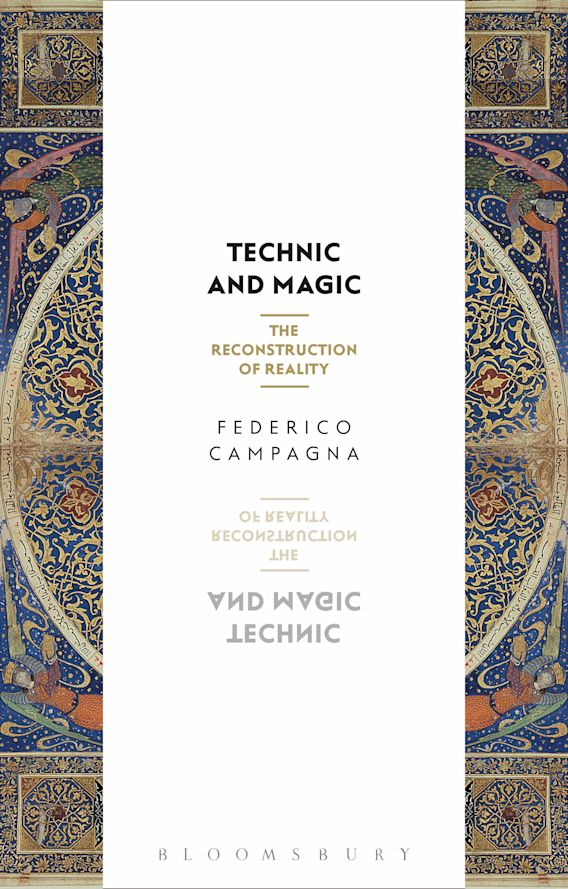
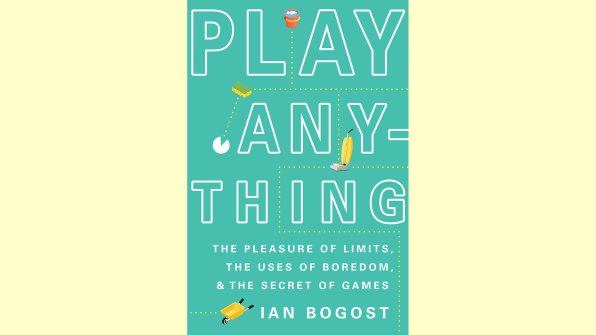

Character Design
This workshop centered on the importance of good character design. I introduced my understanding of this from my work on Andy Davenport’s series the ‘Moon and Me’. Students were asked to watch an episode making detailed notes about each character and the relationships between them; as well as to think about what elements of the characters design were fundamental in conveying this information.

Image: Moon and Me

They also heard from Guest Lecturer Deborah Rodrigues, a technologist, artist and character designer based in Berlin (see below).
The Pictoplasm conference was shown as a space at the forefront of character design.
Inspired by the work of Charles Freger, I set students a mini brief to spend a couple of days living as one of the characters in their game. Below I explore the life of Mouse the main character in my game ‘Gunkanjima & Mushrooms’:
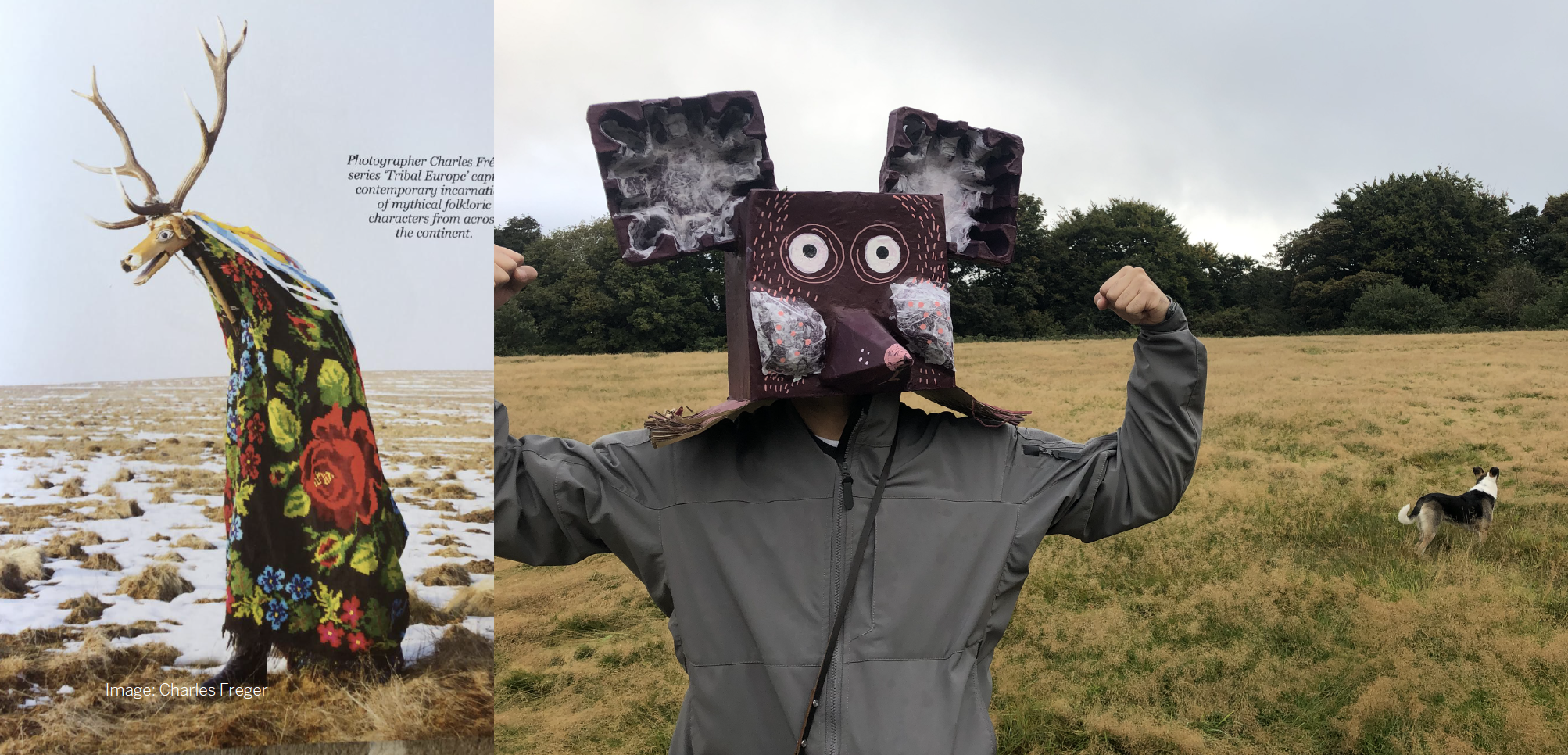
Images: Charles Freger and Dylan Yamada-Rice
Worldbuilding
Drawing on the work of Bartles we explored analogue methods for world-building. We also explored how the aethetic of the game is important to world building and its connection to audeince, for example below I changed the look and feel of Catan’s board game:
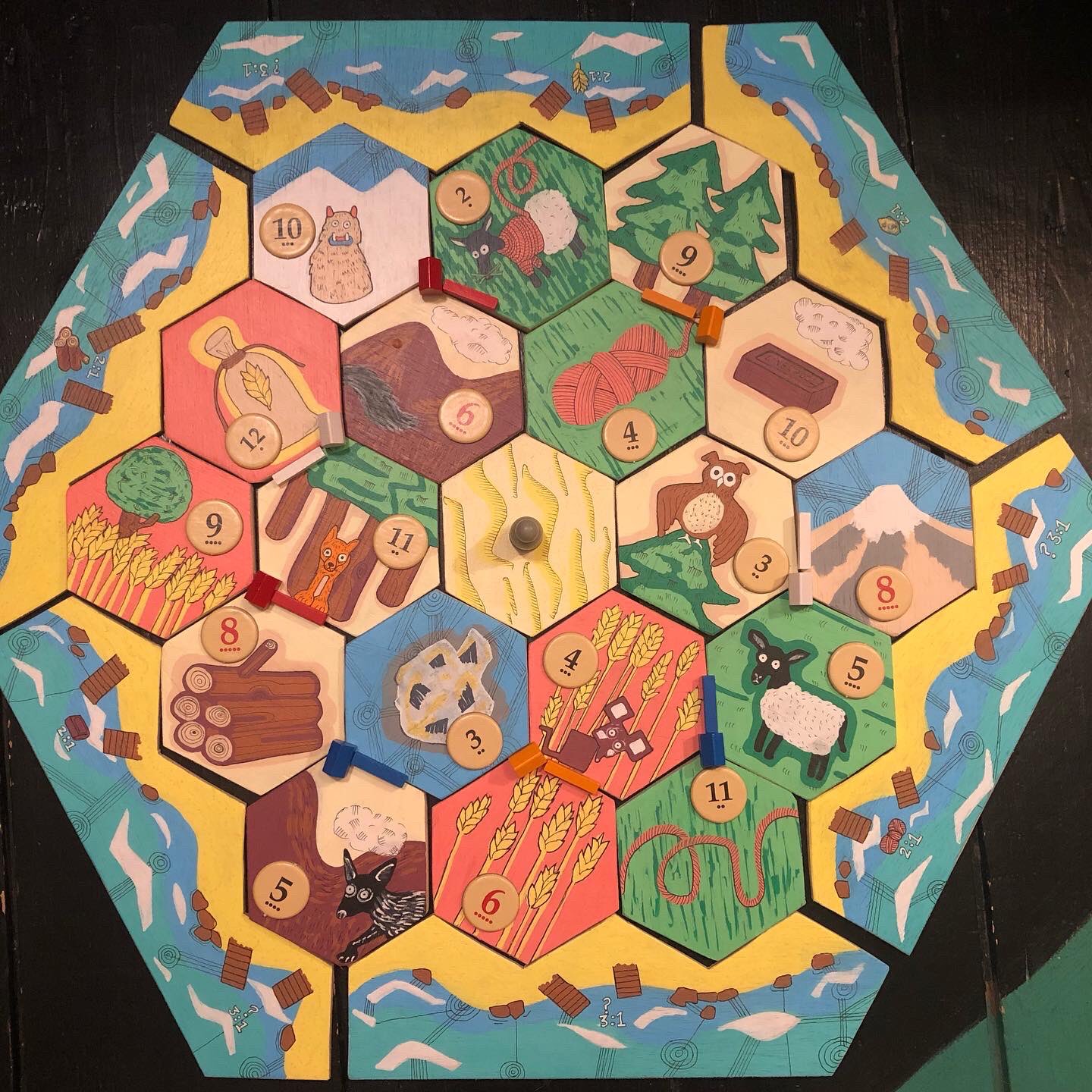
We also considered how world building can be related to Hughes 16 types of play, i.e., how certain gaming worlds encourage certain types of play.
Gaming Mechanics
I started off by showing students examples from my own work at Dubit as an illustration of how research is used to feed into the design of gaming mechanics.

Images by Dubit
This was followed by examples of how this works in relation to other digital games:
This was followed by examples of how this works in relation to other digital games:

Image: Final Game Images: Consume Me by Jenny Jiao Hsia/AP Thomson

Image: Research for gaming mechanics: Consume Me by Jenny Jiao Hsia/AP Thomson
We then moved on to discuss the connection between in-game challenges and actions available to the player to complete those, and how an exploration of these can extend the narrative of a game. An example of how this works in relation to narrative can be seen in Oliver Jeffer’s “This Moose Belongs to Me” where the main character imagines a range of riduclous tools for freeing himself none of which are suitable for the job. By creating tools unsuitable for the job the audience is engaged in the narrative through humour; game design is similar:

Image: This Moose Belongs to Me by Oliver Jeffers
“If a game is to be coherent, the challenges and actions available to the player at any given time should be conceptually related to one another.” (Adams, 2014, p.40)
We explored notions of paper protopying gaming mechanics on different scales:

Image: Paper prototyping new gaming mecahnics for Nintendo’s Animal Crossing on a small scale

Paper prototyping my the gaming mecahnics for my new game “Gunkanjim and Mushrooms’ on a human scale
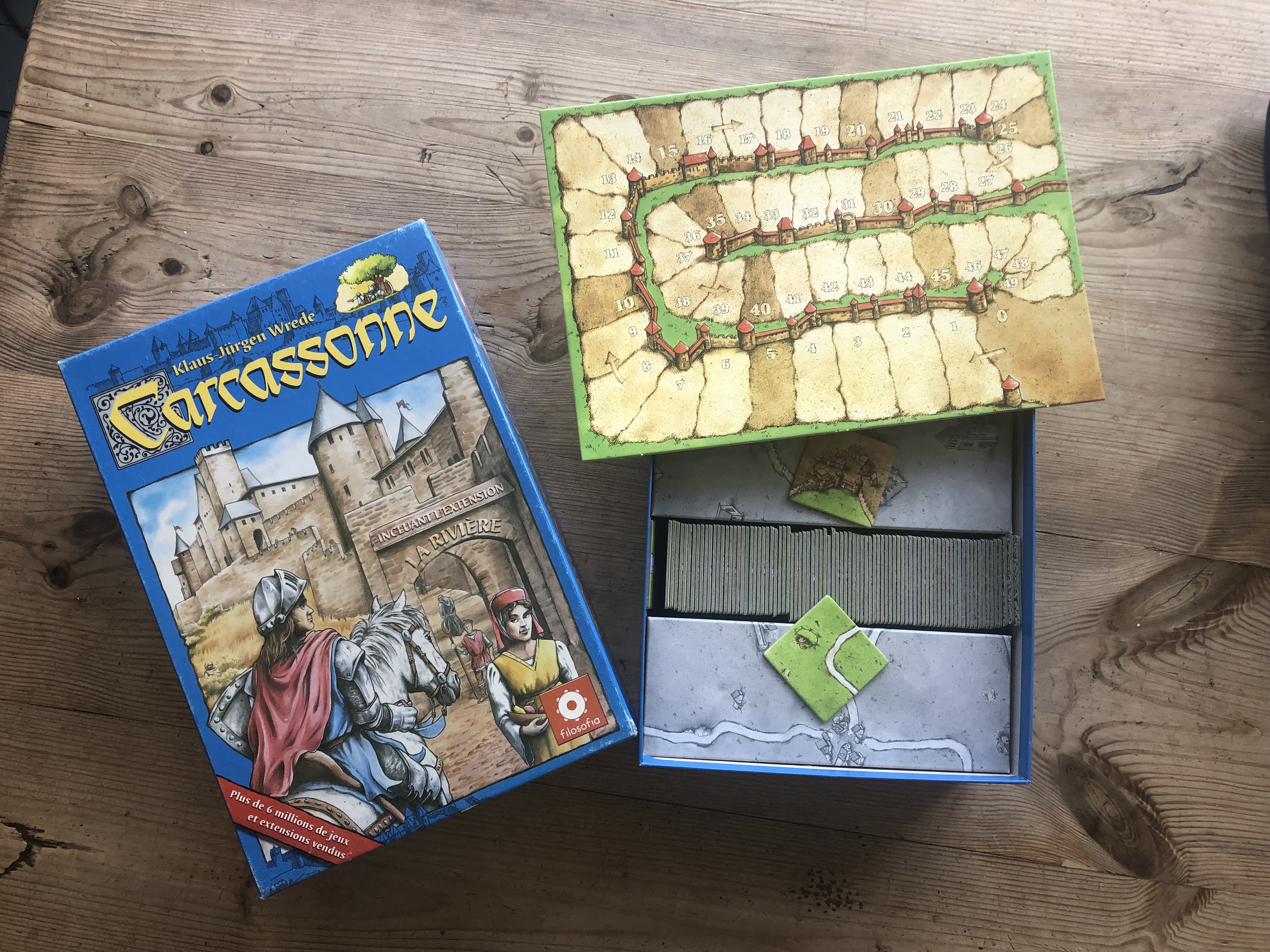
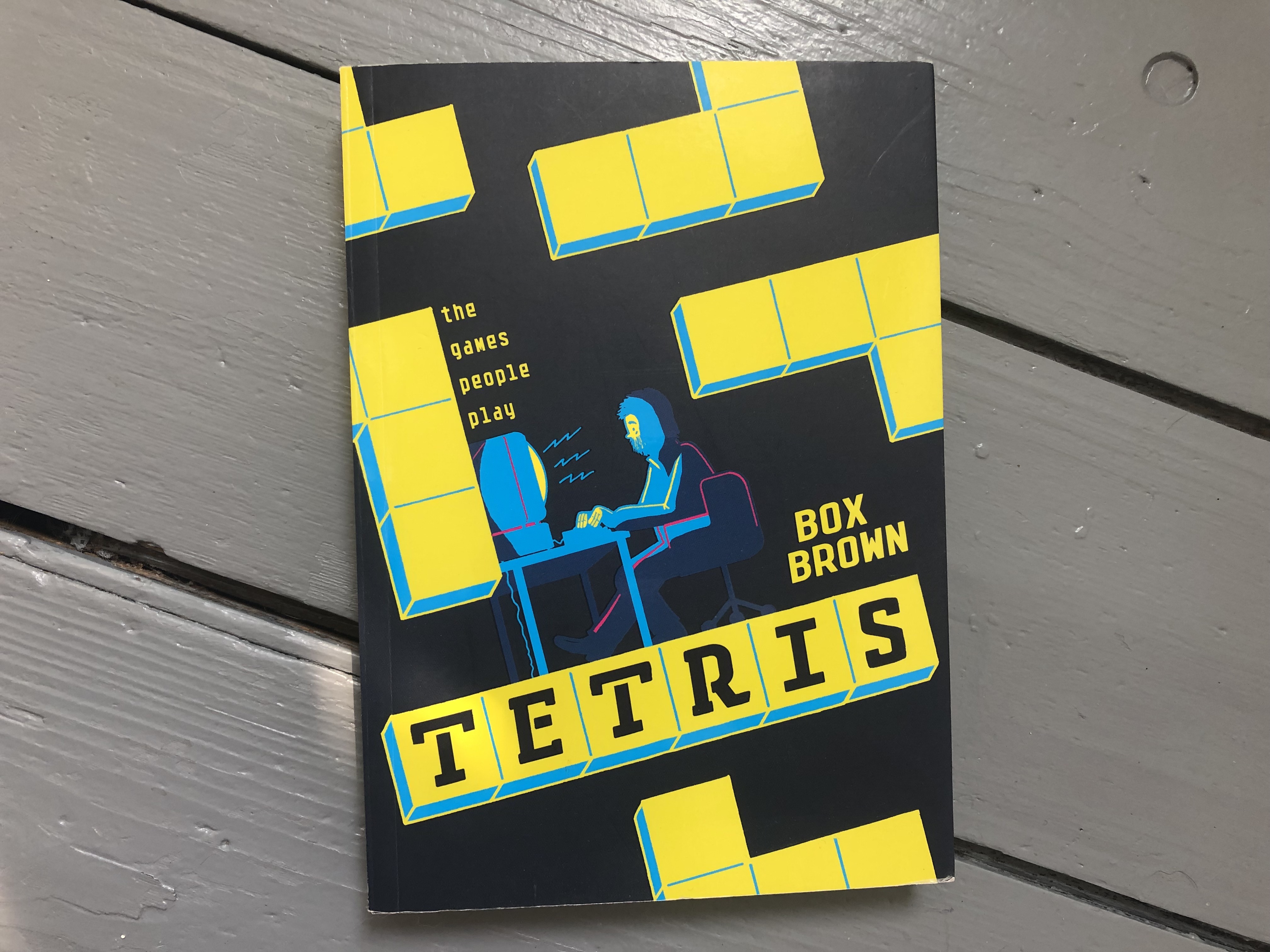

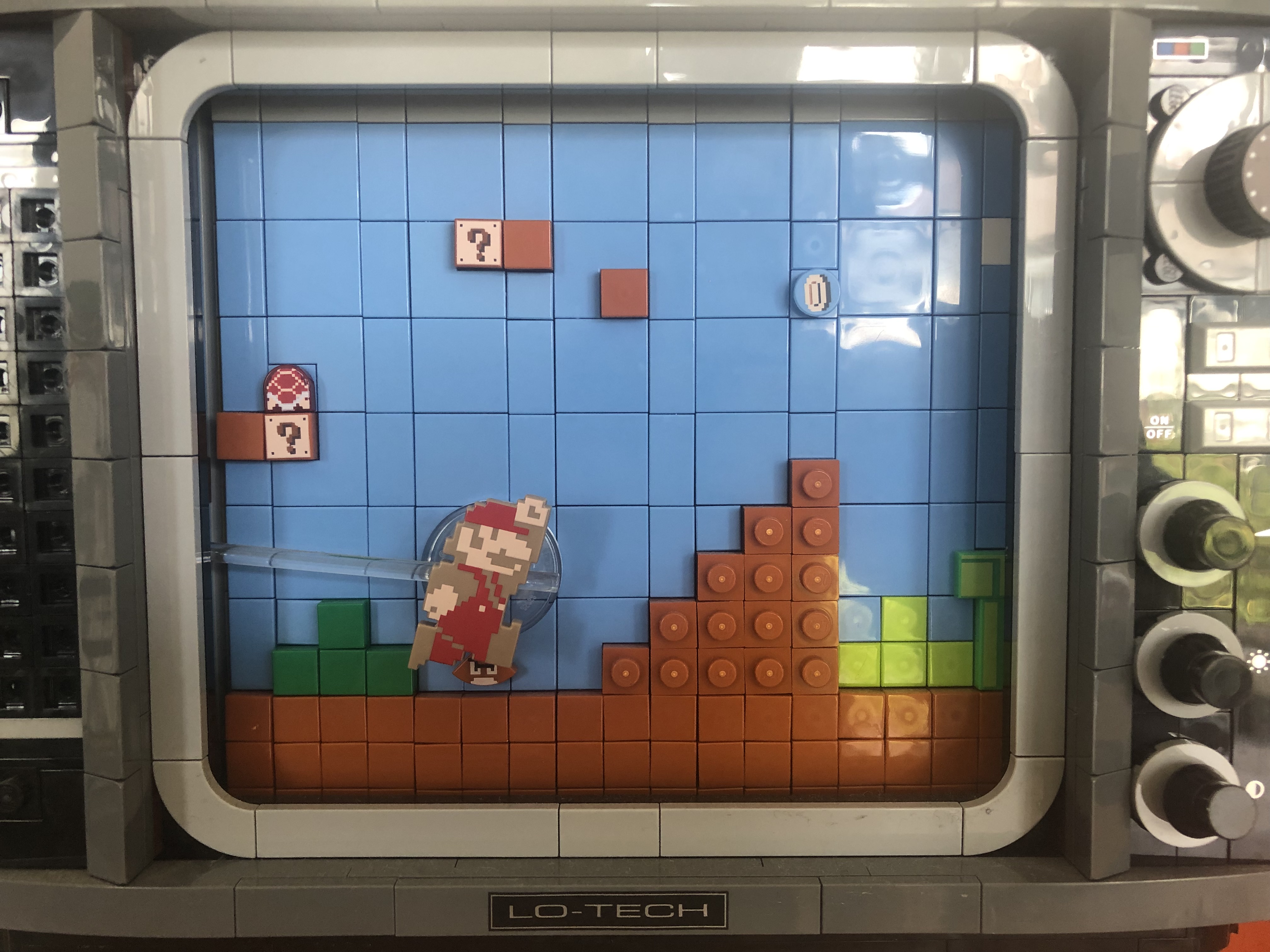


16 Types of Play
Application of Bob Hughe’s 16 types of play to the context on Information Experience Design
In this session students were introduced to various mechanisms for testing user experience in relation to their game.
Teaching in game: Animal Crossing
During lockdown I taught a session on the history of immersive technologies in the video game ‘Animal Crossing’. I built an in-game video arcade that showcased key moments from history starting with cave paintings which were placed in caves at points where sound would vibrate from the walls to give a sense of 360 acoustics.
 Image: History of immersive tech lecture in Animal Crossing, Dylan Yamada-Rice
Image: History of immersive tech lecture in Animal Crossing, Dylan Yamada-RiceGUEST & VISITING LECTURERS
Olivia Sullivan/ Grapic Novelist

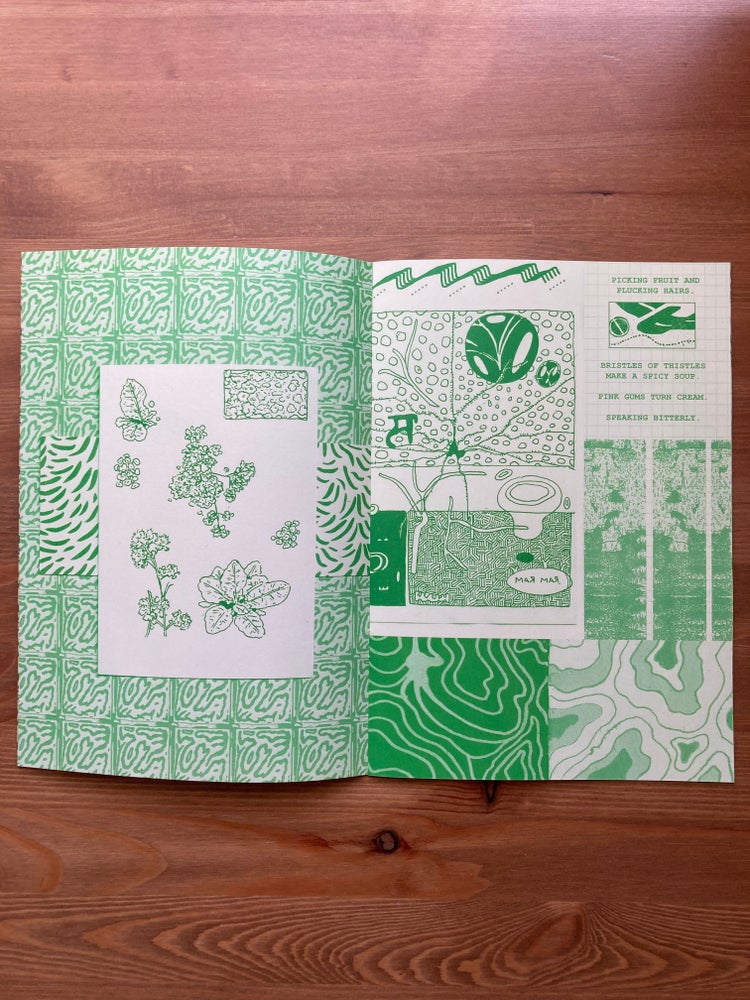
Deborah Rodrigues/ Technologist & Artist
Characters, VR, AR, 3D, animations and hugs
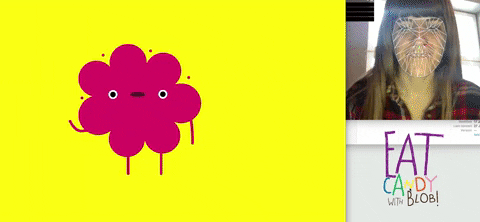
Ronnie Deelen/ Artist & designer
Image, sound and technology
Student Work/ 2020
Choose a non-fiction narrative to turn into a prototype or a pitch for a digital game or story. Stories might orginate from: the news; your life; documentaries; books. You will be set shorter briefs throughout the term in order to build up a collection of work that will allow you to respond to this overarching brief.
Farewell/ Khalil Hou
Artist statement: The theme of this game is time and death. I chose this because of COVID-19, specifically, because nearly a year after the emergence of the pandemic, many people are becoming numb to the widespread deaths. Yet, death is a topic that humans can never get around, and I wanted to explore it in the form of a game.
In this game, I have transformed the death of a person into a monolith containing a small story about their life. The aim of the game is to explore the stories hidden in all the monoliths. I took the stories form the internet about those that have died from COVID-19.
The game has a time element, with the passage of time, monoliths will slowly become transparent. When a monolith is completely transparent, it will disappear. If you open the game before it disappears, the transparency curve is refreshed and you have time to read more of the story, but even so it will disappear eventually anyway. So the player’s mission is to learm the stories before then. Further, the stories contained in each monolith are told over time; it might take three days to finish an entire story. If the player doesn’t log into the gamebefore the monolith disappears, the story is lost forever incomplete.

All about that Beat/ Yumeng Wang
Artist Statement: All about that Beat” is a therapeutic, single-player, low poly game. The Player controls a DJ chicken figure in a fictional scenerio, helping this character complete various missions. Players need to complete two types of tasks:
1. Prepare for a DJ performance by reducingstage fright, anxiety and self doubt and being mentally prepared.
2. Practice remixing beat and making catchy tunes by using existing sound/musical elements.
When the two tasks have been completed, players can enter the performance mode and play their piece at a local club or music fesitival. The final goal is to help DJ Chicken Feet reach the top 100 world DJ rankings list.
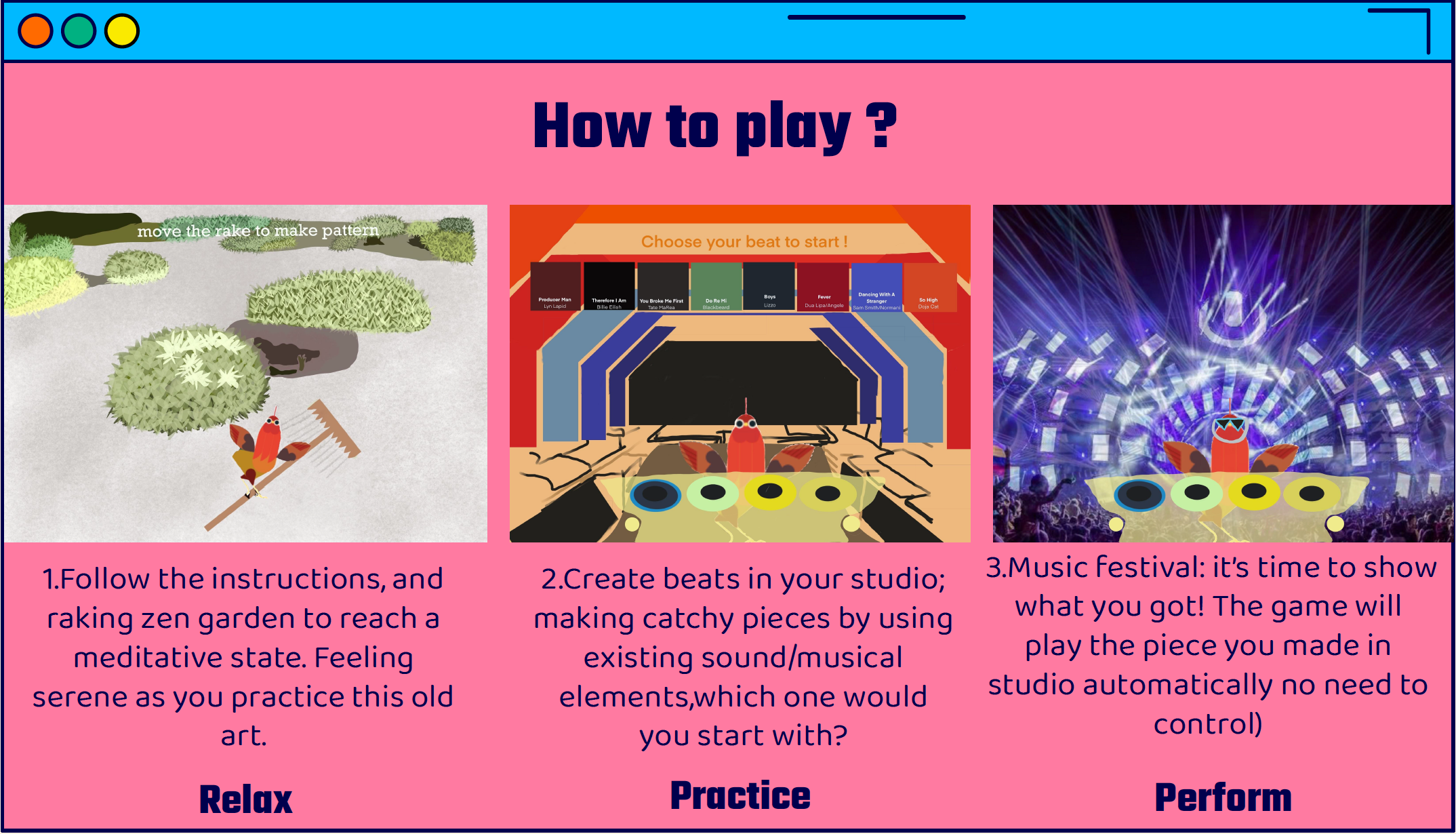

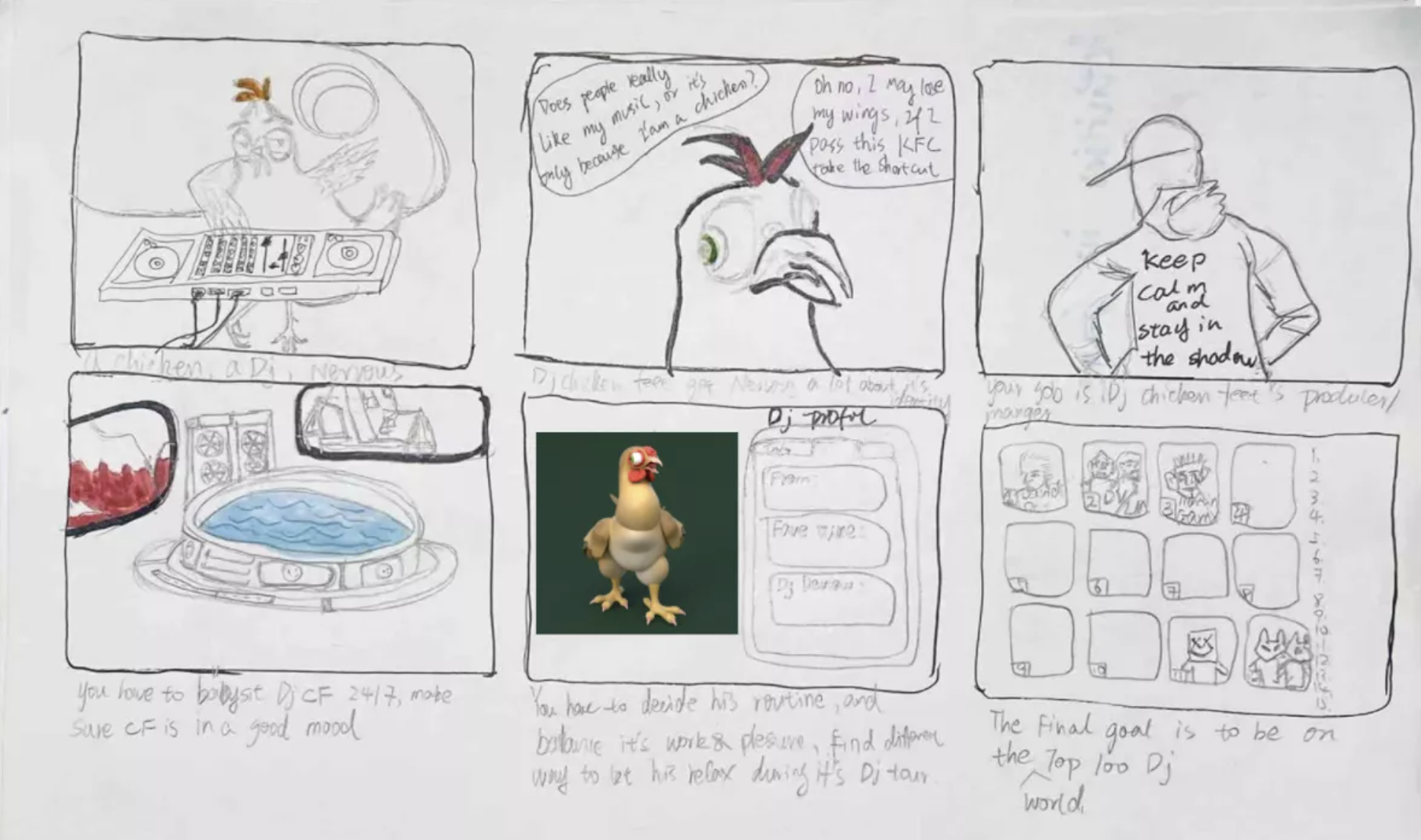
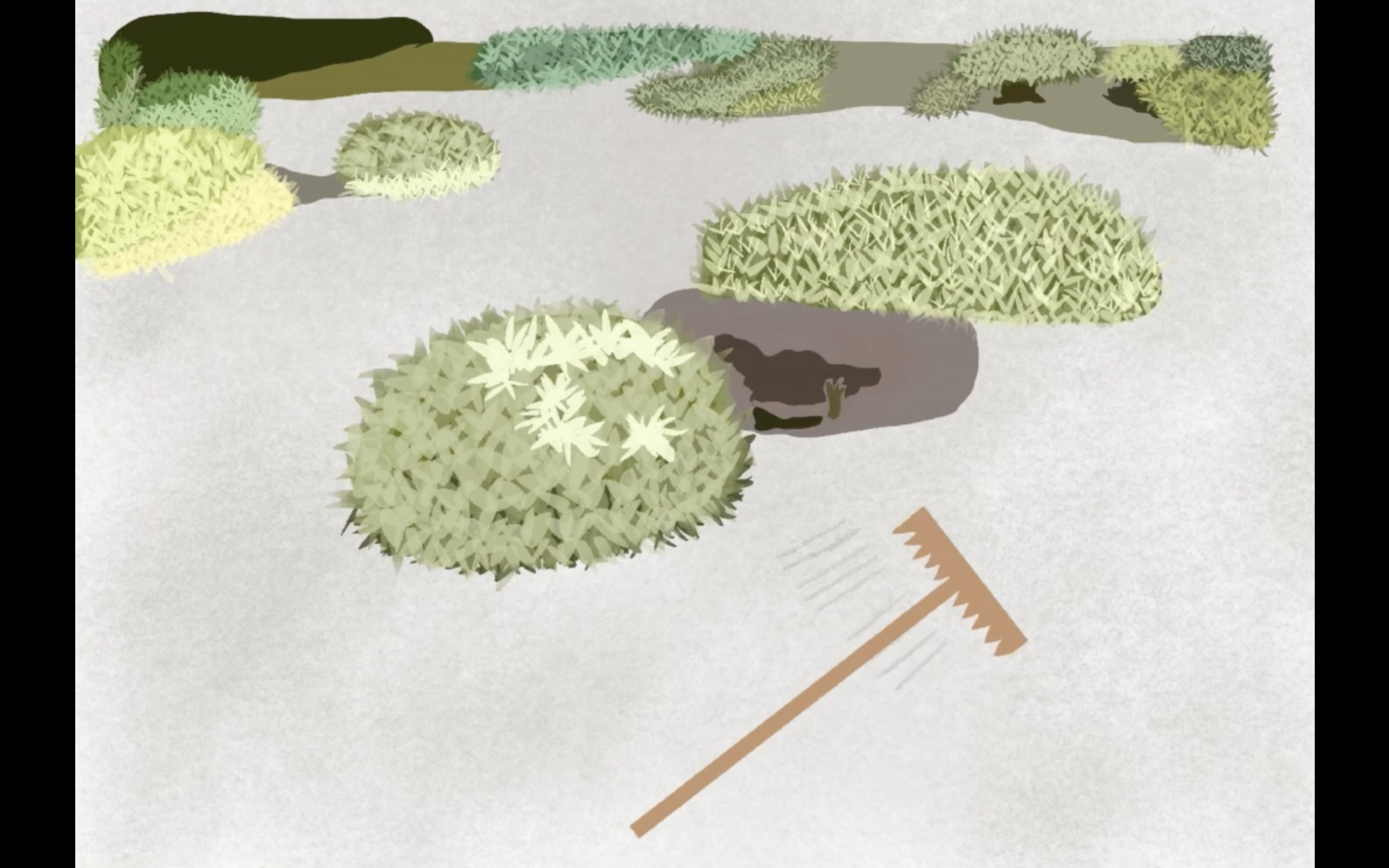

Knock Down/ Xingeng Wu
Artist Statement: The game reflects on the ecological and cultural impacts of contemporary rural urbanisation. The continuous urbanisation process and the abuse of natural resources by humans are rapidly changing the geological landscape and human environment, which makes the sentiment of solastalgia very common.
Through this project, I hope to reproduce this reflective process in the form of a game. Dince the project began with my memories of old buildings and nostalgia, I envisioned the player destroying old buildings and rebuilding modern cities. With the intention of letting the player thing and examine the pros and cons of urbanisation in the process of the game.
The visual style of the game comes first from my obsession with pixel-based games, and secondly from the fact that contemporary HD online games require a lot of natural energy and data centers to support their operation "Gaming’s Climate Dread in a 4K Streaming Ecosystem" This runs counter to my original design intention. And the low energy consumption of the pixel style while satisfying the narrative and gameplay is one of the reasons why I chose this medium.




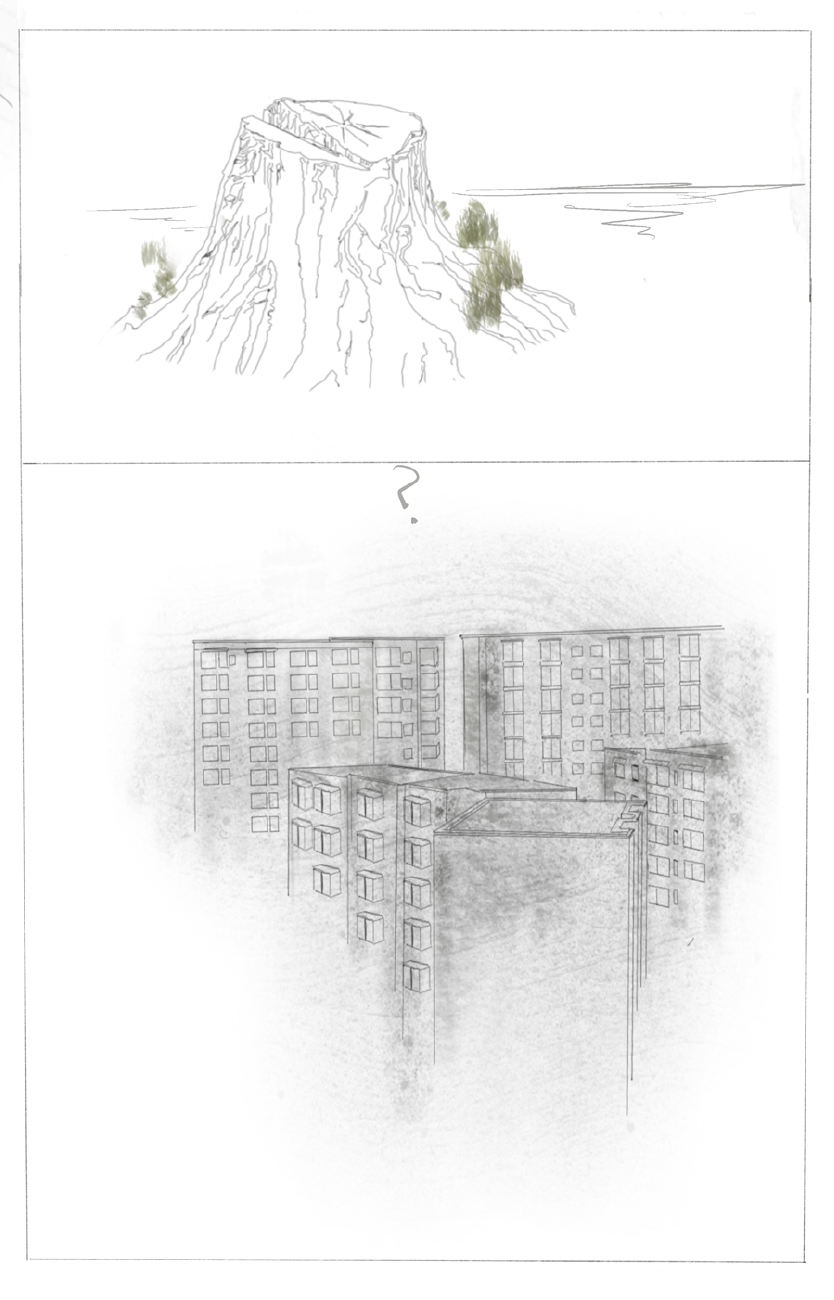
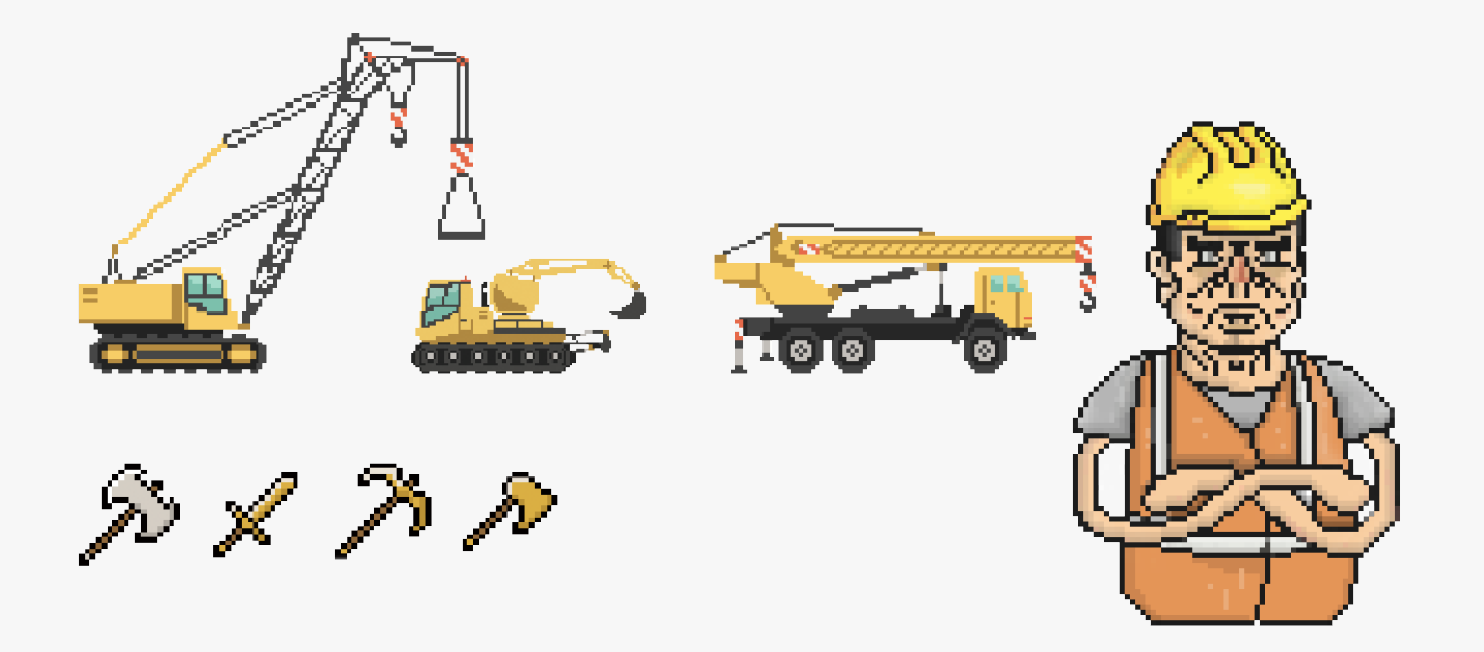 Research for gaming narrative and aesthetic development
Research for gaming narrative and aesthetic developmentThe Moth Island/ Shuling Long
Artist Statement: A role-playing adventure game that will let the players fo through a story, solving the secret behind the mysterious island. The game will focus on narrative expression and atmosphere creation.
Moth Island is a special disease foundation highly controlled by capitalism. The protagonist came to the island with the mission of saving society. In the game, in order to complete the mission, players need to passively make a lit of choices. Some choices may be lies from the upper classes, some choices are related to the lives of ordinary people, and some seemingly beutiful options may be full of conspiracies by the upper clases. Depending on the choice th e player makes, it will lead to different outcomes.

Game Demo


 Character Design
Character Design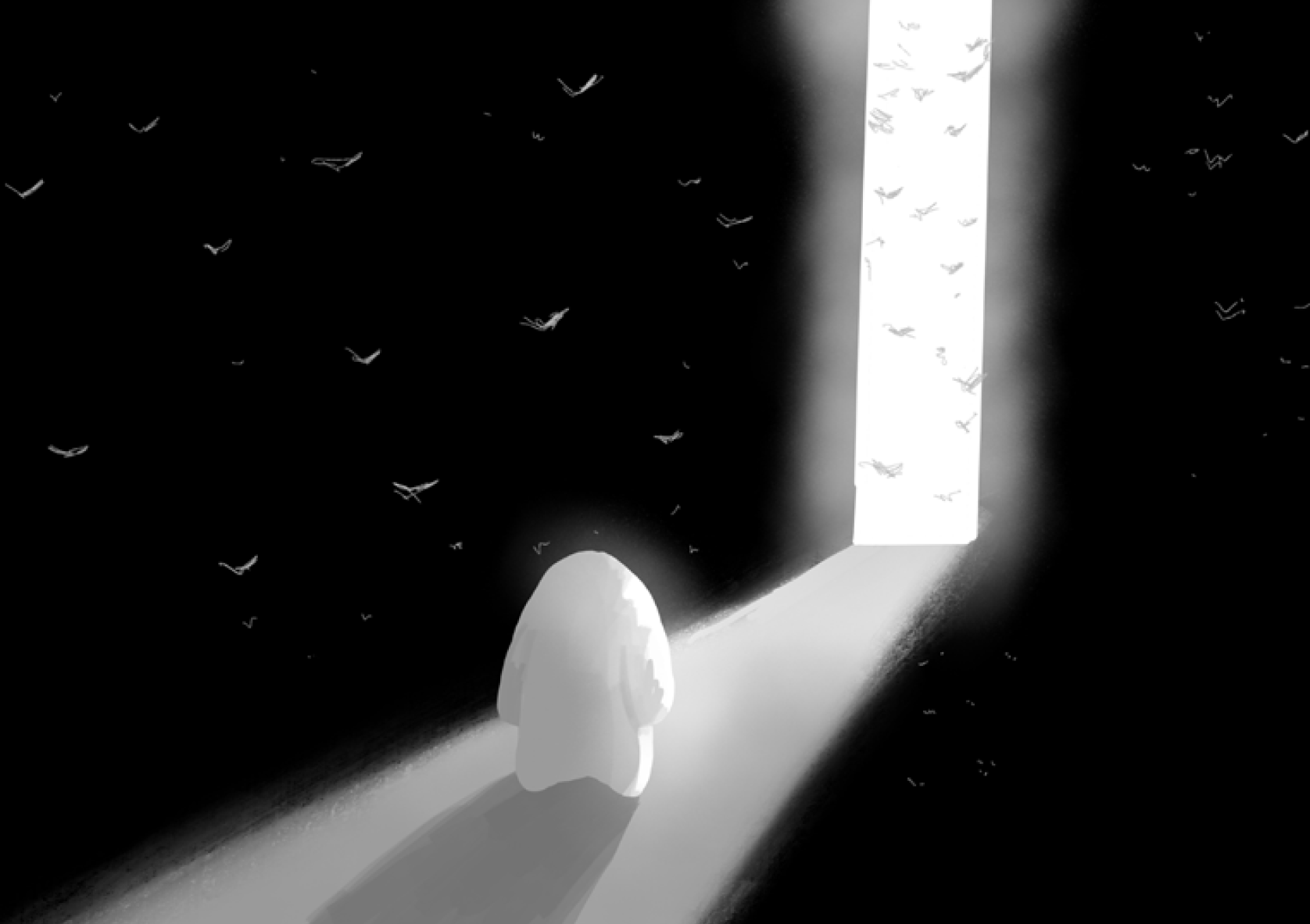

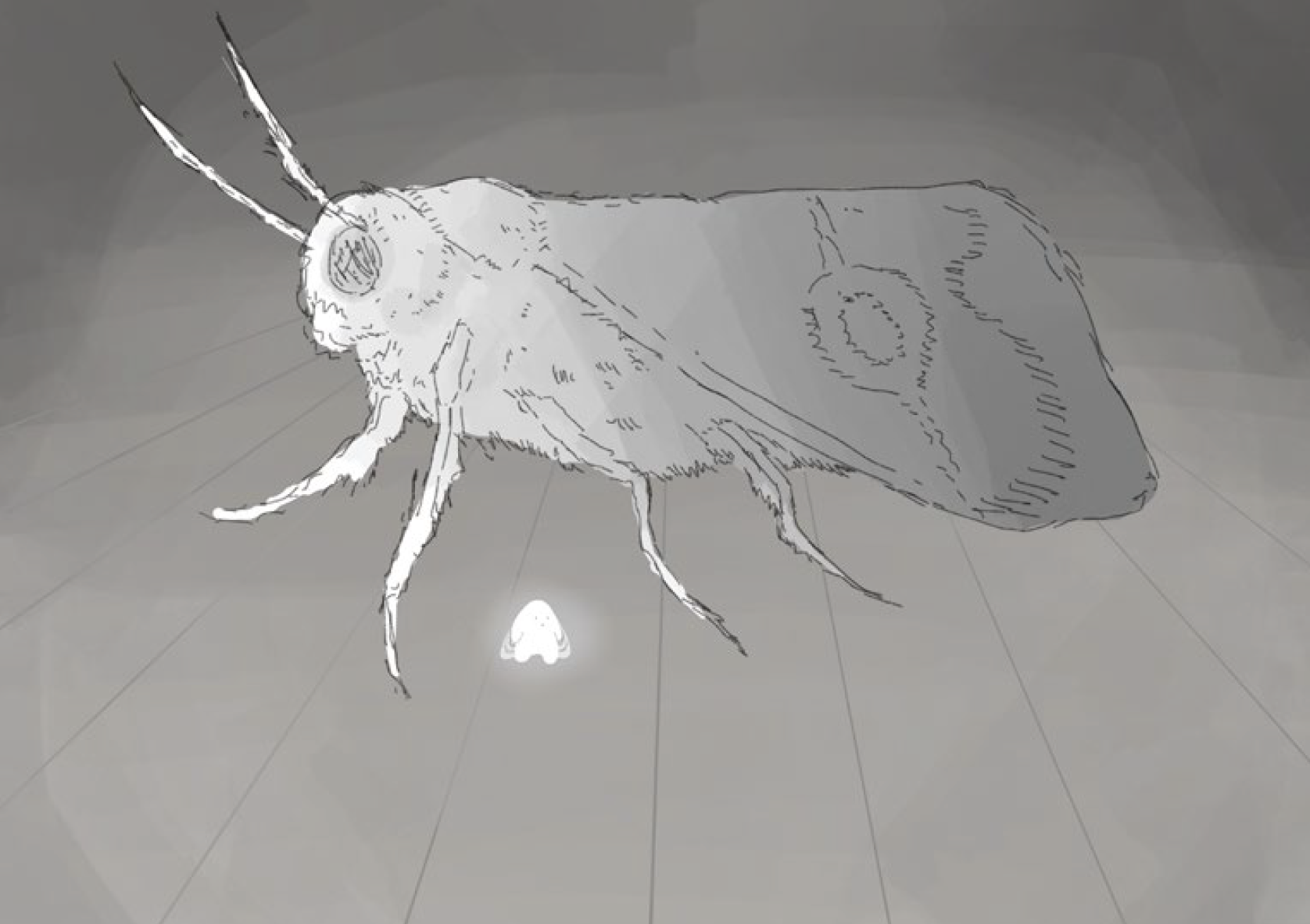
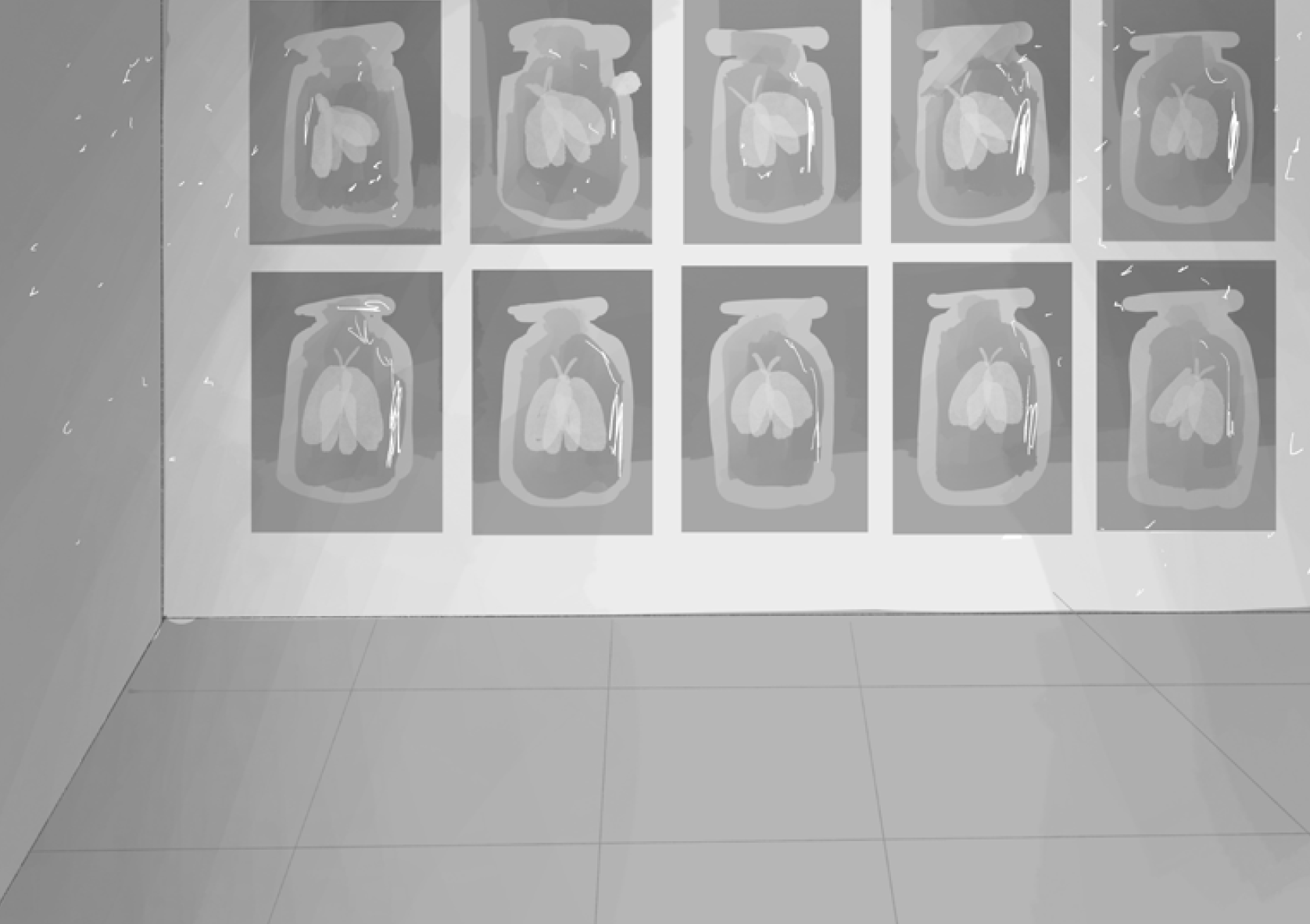
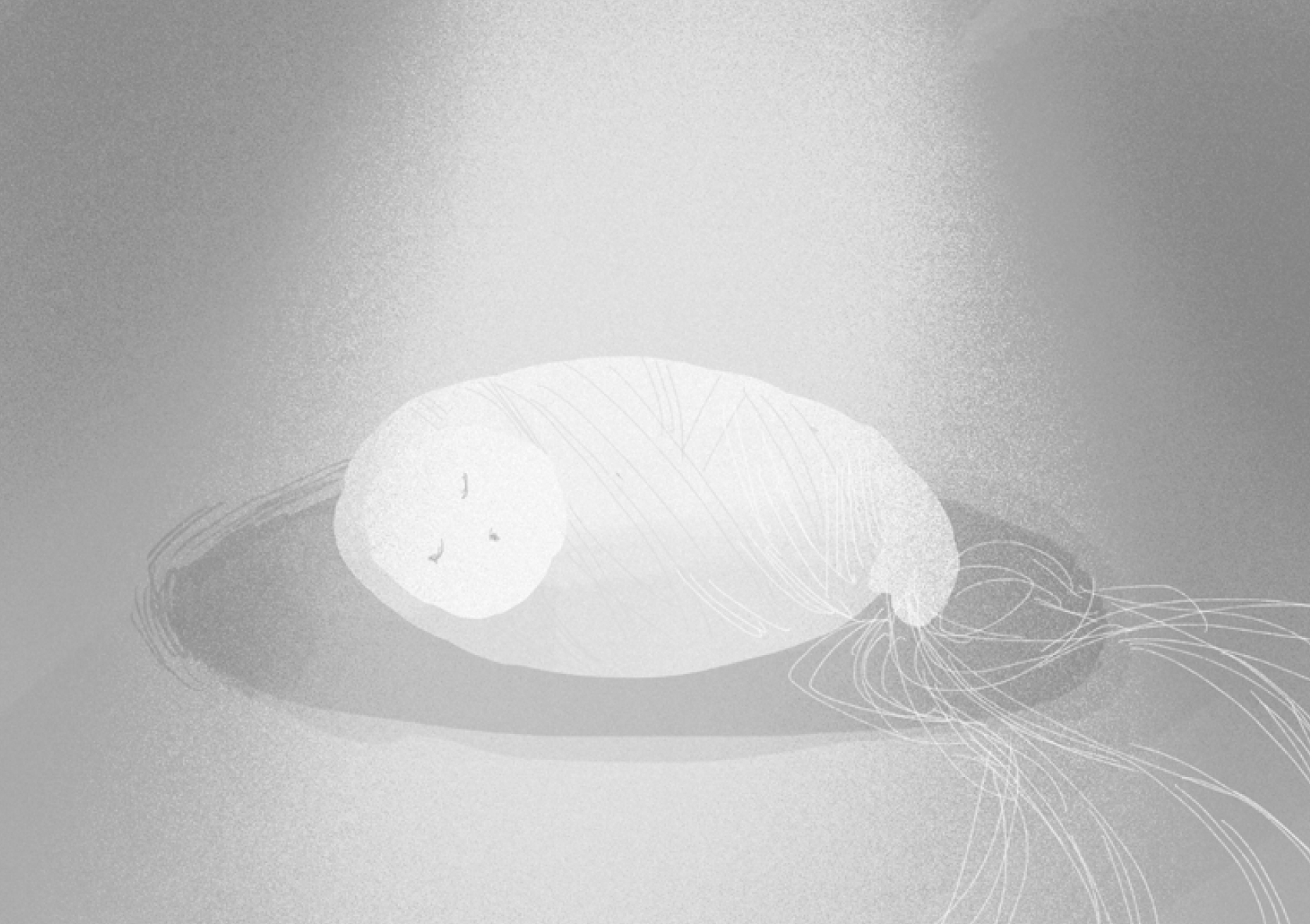
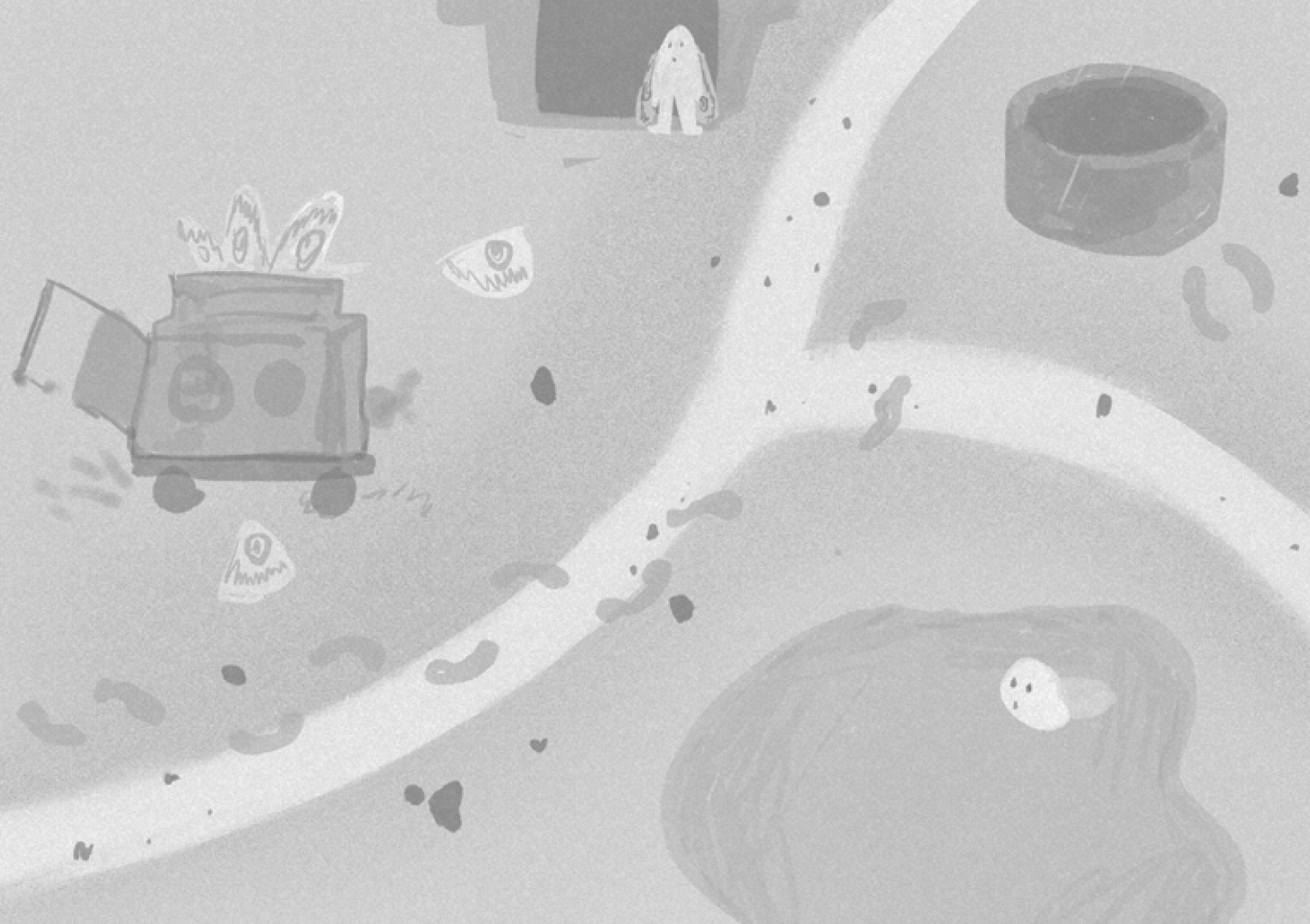
Storyboard
The Lizard/ Remi
Artist Statement: The lizard’s two eyec can rotate 360 degrees, which means that if the eyes are looking at different places at the same time, tthe perspective in the train will be different iof the two eyes but the whole picture will be combined together.


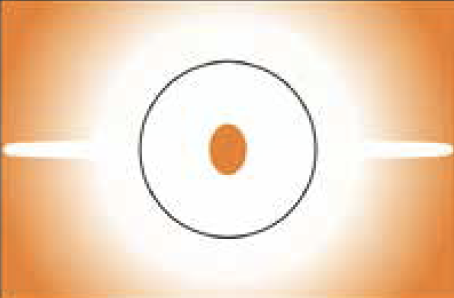




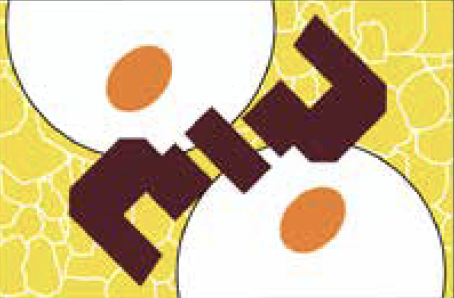
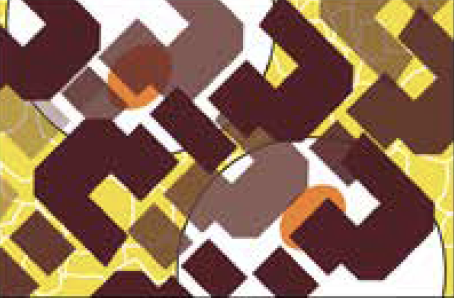


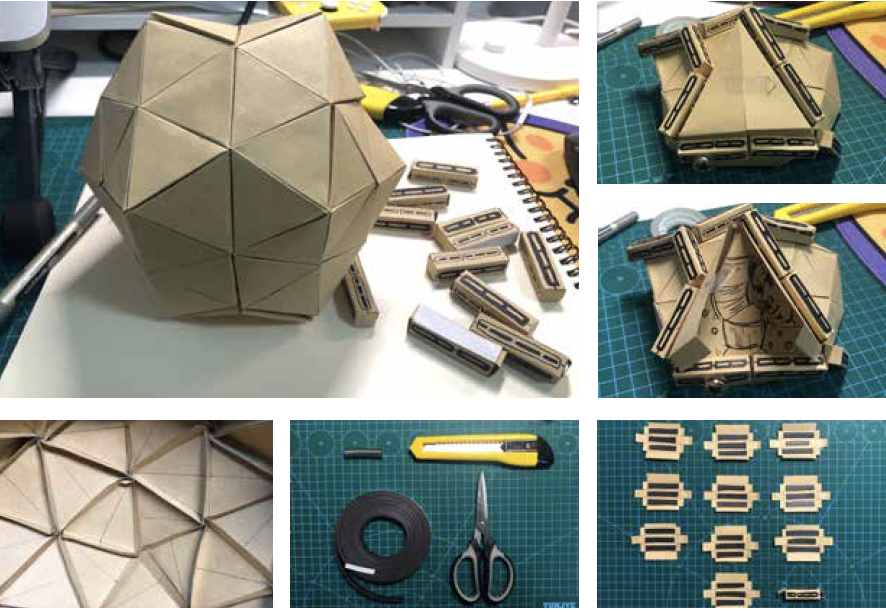

Dreaming Dog/ Jiangnan Lin
Artist Statement: Have you ever wondered where you pet things you are when you are not at home for a really long time? For me, I guess my dog will consdier that I am stuck in the “human store” since my dog spends time in a pet store when our family are away for a long time. The project is about a dog’s deam journey of getting to the human store to rescue his master. It combines scenarios the dog may face during the journey. Each one provides an option of routes that the player can take. The aim is for the player to navigate these and lead the dog to the human store.



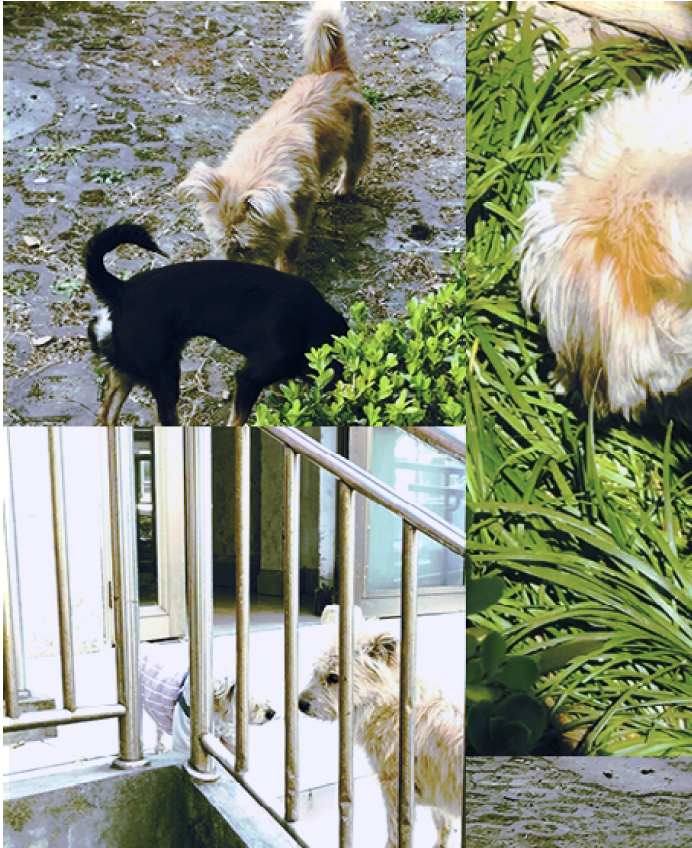
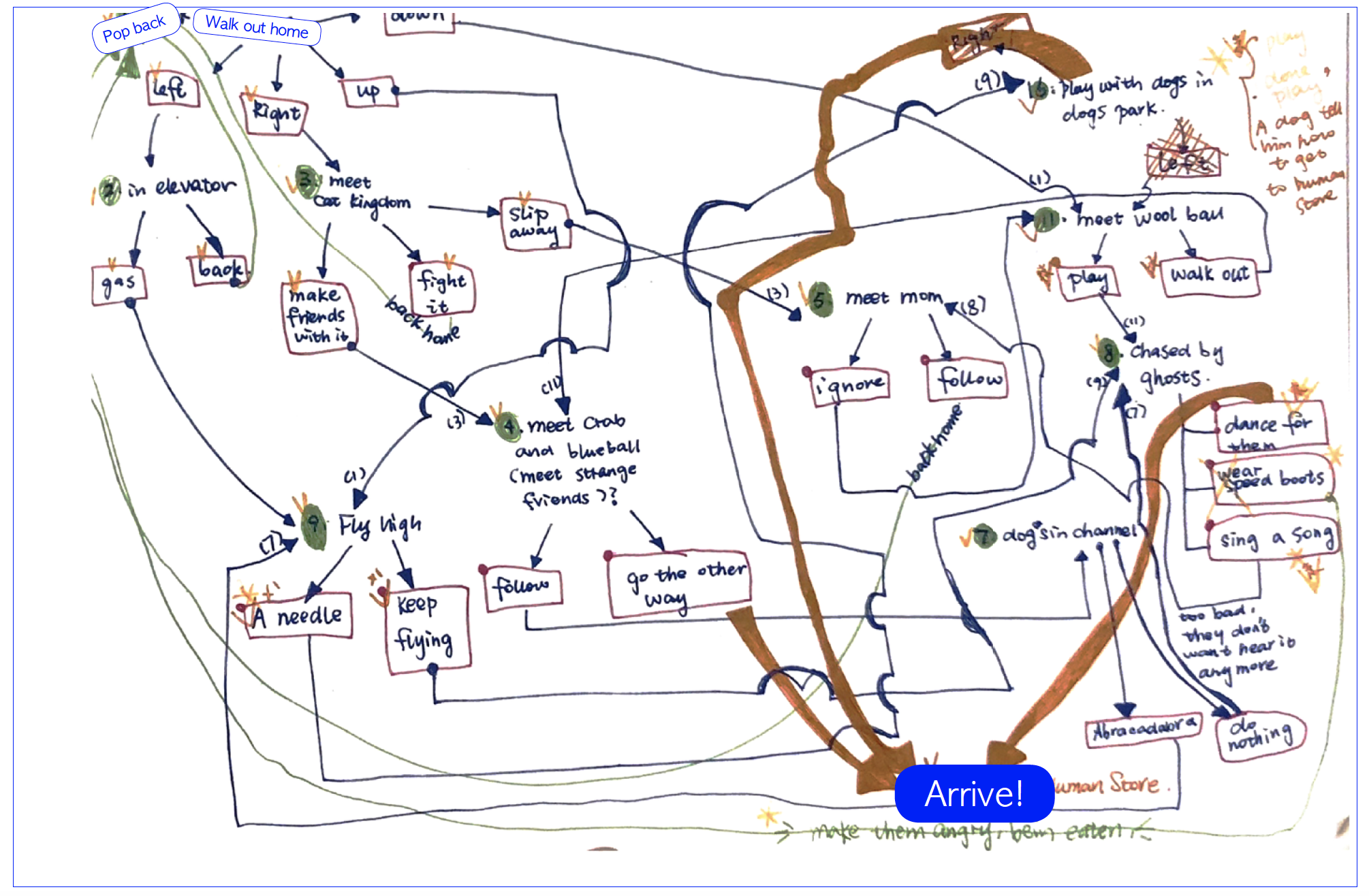

Student Work/ 2019
Students were asked to work as part of a small group with a brief from the BBC, to design and build a prototype of a tangible and interactive way to provoke thought and discussion (what the BBC call ‘provokotypes’) around the opportunities or risks/misuse, pertaining to 3 new technologies: AR, VR, and Voice recognition. Students were asked to explore how their provokotype could engage end-users who are visitors to the BBC’s Blue Room, and produce a working prototype using a format and media of their choice. The underpinning theme should relate to the fact that as a public service the BBC is seeking to explore the implications for users and to understand the considerations for creating responsible and valuable services that inform, educate and entertain. All these technologies are rooted in spatial and Immersive designpractice and as such enable experiences that converge the digital and the physical world.
Playin’ it by Ear/ Emma Aparici, Giorgia Grippa, Stella Papaioannou, Satya Naagesh
This group began by exploring voice technology and AI in general before moving on to explore it’s implications for future broadcasting.
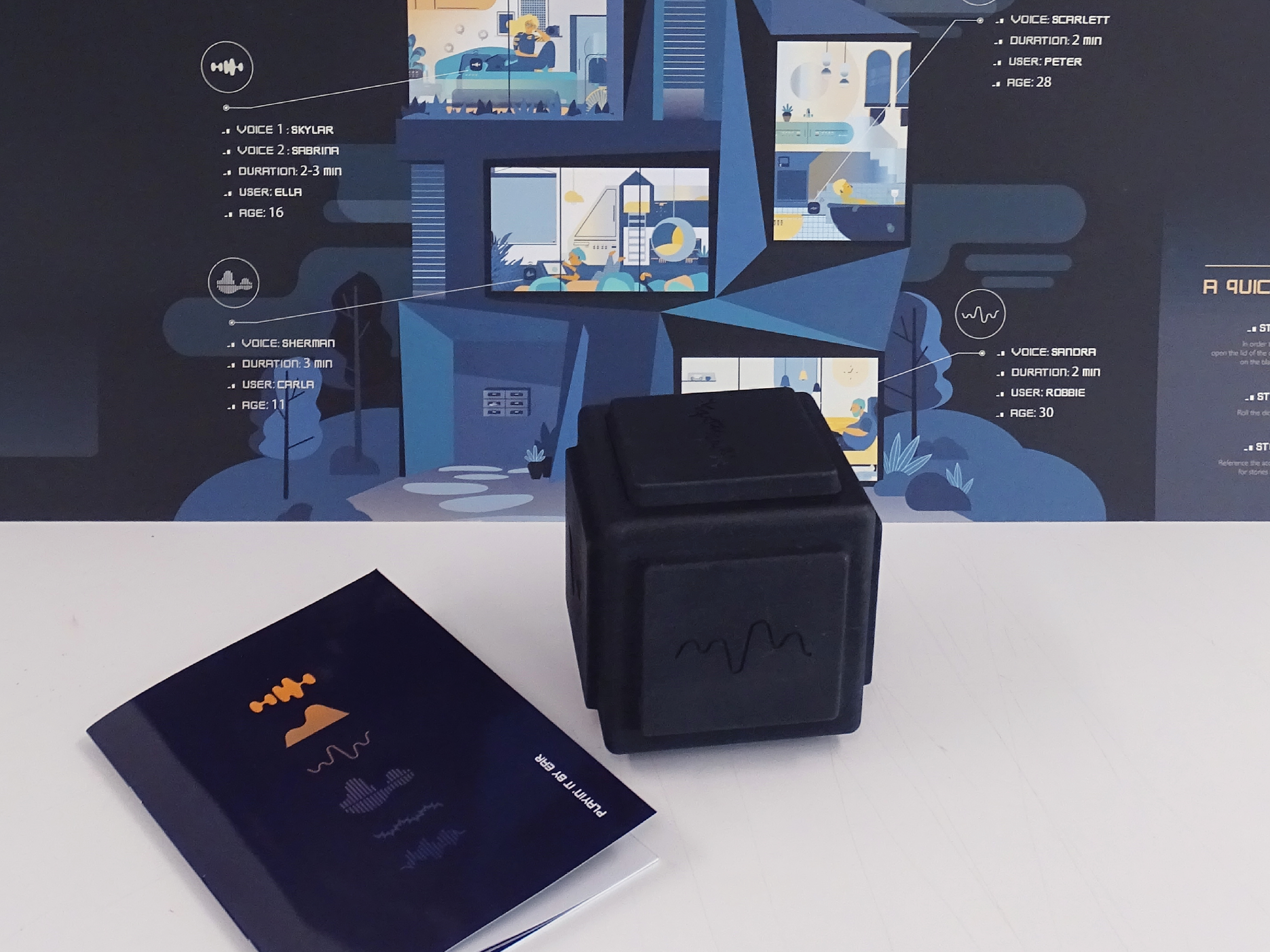
Roll the dice and listen to the stories:






